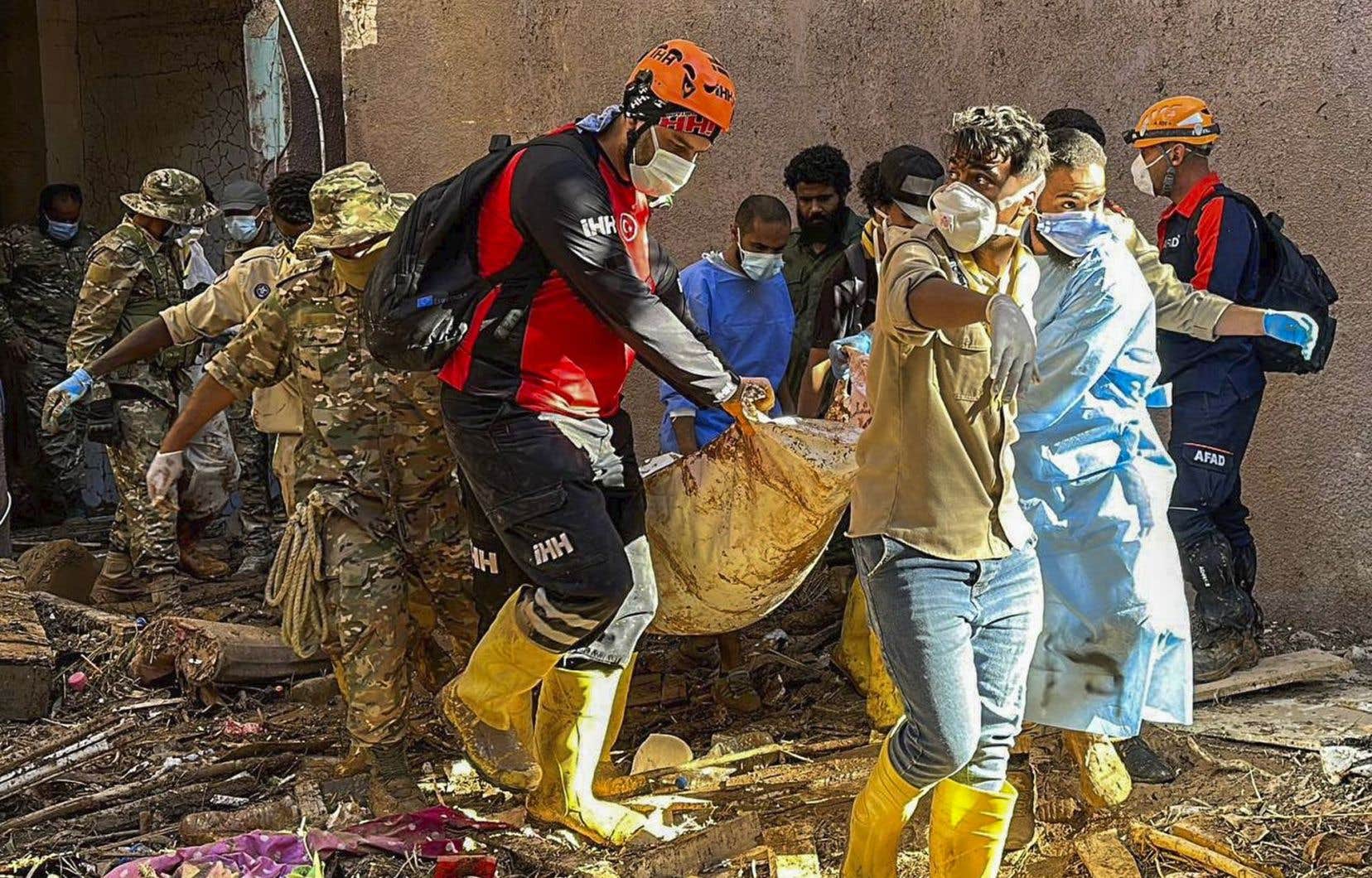International aid to Libya intensified Thursday after devastating tsunami-like floods left thousands dead and missing in the east of the country, a toll that the UN attributes in part to the legacy of years of war and chaos.
The surge of water during the night from Sunday to Monday in Derna broke two dams upstream and caused enormous damage in this coastal town of 100,000 inhabitants where entire blocks of houses, cars and countless people were washed away in the Mediterranean Sea.
Hundreds of body bags are now lined up in the mud-stained streets, awaiting burial of the victims. Traumatized and grieving residents search for missing loved ones in ruined buildings and bulldozers clear away debris.
The United Nations, the United States, the European Union and many countries in the Middle East and North Africa have pledged to send relief teams and aid, including food, water tanks and water, emergency shelter and medical supplies.
Carried away by the waves
However, access to the disaster area remains very difficult after the destruction of roads and bridges, damage to power and telephone lines cut in large areas, where at least 30,000 people were left homeless.
Moreover, this North African country has been plunged into chaos since the death of dictator Muammar Gaddafi in 2011, with two rival governments, one recognized by the UN based in the capital Tripoli, in the west, the other being installed in the eastern region affected by the floods.
One survivor told how he and his mother survived. “Within seconds, the water level suddenly rose. I went out with my mother to take refuge with my brother who lives above, but the waves carried us away […] before throwing us onto a staircase of an empty building, four houses from ours,” he said from his hospital bed, according to testimony published by the Benghazi Medical Center.
“We went up the stairs and the water rose with us until we reached the fourth floor […]. From the window, I saw cars and bodies swept away by the water,” he added.
The assessments put forward by the Libyan authorities vary from one official to another. If the spokesperson for the Ministry of the Interior within the Eastern government reported on Wednesday more than 3,840 deaths, the minister himself, Issam Bouznigua, spoke a few hours later of 2,794 deaths in Derna and in other Eastern cities. Health Minister Othman Abdel Jalil said he expected a death toll of 10,000 on Monday evening.
Most of the deaths “could have been avoided,” said Petteri Taalas, head of the World Meteorological Organization, which depends on the UN, on Thursday. Years of conflict in Libya have “largely destroyed the weather observation network”, as have the computer systems, he said in Geneva. “Flooding occurred and no evacuations took place because appropriate early warning systems were not in place,” he added.
” Climate change “
Climate change experts have linked the disaster that struck this region of Libya to the effects of a warming planet, combined with years of chaos and crumbling infrastructure in Libya.
Storm Daniel, which caused the floods, gained strength during an exceptionally hot summer and hit Turkey, Bulgaria and Greece, before reaching Libya on Sunday.
It is “another reminder of the catastrophic deadly impact that climate change can have on our world,” said Volker Turk, the United Nations high commissioner for human rights.
It is the worst natural disaster affecting Cyrenaica, the eastern province of Libya, since the great earthquake that struck the town of al-Marj in 1963.
In the country and abroad, there is strong mobilization to help the victims.
A French plane carrying around forty rescuers and several tonnes of medical equipment, including a field hospital, was chartered. Egypt, for its part, will set up camps in the west of the country to shelter flood survivors.
